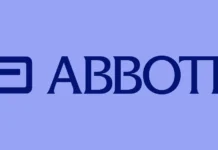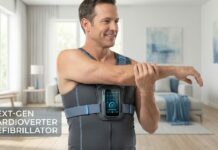In healthcare, the continuous march of disruptive technologies and the pervasive influence of interdisciplinary research have ushered in an era of unprecedented transformation. This evolution is characterized by the emergence of user-friendly, efficient, and innovative solutions that are revolutionizing the industry.
Since its inception in 2017, the healthcare 4.0 era has been steadily ushering in a transition from traditional healthcare models to digital counterparts. This transition is marked by the increasing prevalence of cloud-based solutions, all geared towards enhancing accessibility, accuracy, service quality, and cost-efficiency.
The digital transformation wave has swept through various industries, leaving an indelible mark. However, it is within the healthcare sector that we witness a particularly diverse array of cutting-edge solutions. These range from the application of 3D printing in drug delivery to the concept of the digital front door.
Central to this transformation is the advent of the Internet of Medical Things (IoMT) also known as healthcare IoT. The IoMT amalgamates medical devices and software applications to offer a multitude of medical services. In fact, it’s projected that smart hospitals will deploy approximately 7.4 million IoMT devices by 2026. These devices facilitate activities such as data monitoring, recording, and virtual communication, significantly altering the healthcare landscape.
Now, while there are various solutions and platforms worthy of discussion, this article will focus specifically on the transformative synergy between Voice over IP (VoIP) and IoT. Together, these technologies are reshaping the way we live and work, with a particular emphasis on their potential to revolutionize communication within the healthcare industry.
Key areas:
IoT and IoMT Advancements in the Medical Space:
Healthcare IoT encompasses the devices and platforms used by medical institutions to enhance patient care and operational efficiency. IoMT extends healthcare beyond the confines of the hospital, making it more patient-centric. It has substantially improved patient monitoring, care quality, remote services, and data collection, all with the goal of enhancing service quality and patient outcomes.
How VoIP Solutions Are Revolutionizing Healthcare:
VoIP, or Voice over Internet Protocol, has bridged geographical gaps by enabling cost-effective communication over the Internet. In medical institutions, VoIP plays a pivotal role in various aspects, from automated call routing using IVR systems to ensuring secure communication between healthcare professionals and patients.
Integrating IoT and VoIP for Enhanced Patient Experiences:
The convergence of IoT and VoIP holds immense potential in healthcare. By facilitating seamless communication between medical devices, software platforms, and communication channels, these technologies can redefine healthcare processes and systems.
Exploring each of these areas in detail:
IoT and IoMT Technology Advancements for Healthcare
Healthcare IoT, or IoMT, represents a collective of devices and platforms employed by clinics, hospitals, and other medical institutions to improve patient care and operational efficiency. IoMT fundamentally shifts the healthcare paradigm from being solely clinic or hospital-centric to one that is patient-centric.
The introduction of healthcare IoT has brought about significant advancements in patient monitoring, care quality, remote services, and data collection. Companies specializing in healthcare IoT continually strive to develop innovative applications and solutions for medical institutions, with a shared goal of enhancing service quality. In this manner, IoT is fostering a smarter and more interconnected world by enabling devices to communicate and share information.
Some common IoT applications include:
Health and Wellness Tracking Wearable Devices:
IoT wearable devices are invaluable tools for healthcare professionals. They automatically gather real-time data on critical health metrics such as temperature, oxygen levels, and blood glucose levels. This data enables healthcare providers to offer timely, personalized treatments. Moreover, wearable devices empower patients to actively monitor their health, promoting proactive wellness management. For individuals with chronic health conditions, wearables allow for remote monitoring, potentially reducing the need for frequent hospital visits.
Asset and Inventory Tracking and Management:
Effective inventory management is essential for maintaining the quality of patient care. IoT technology enables hospitals and medical institutions to efficiently track and manage medical equipment, supplies, and inventory. By leveraging IoT trackers and tracers, healthcare organizations can minimize losses, optimize resource allocation, and ensure critical equipment is readily available when needed.
Medication Management:
IoT-based medication management devices are available to help patients manage their medication schedules and adherence. These devices are particularly beneficial for elderly patients, those with chronic diseases and cognitive impairments, and individuals recovering from surgery or hospitalization. They provide reminders, track doses, and even send alerts to caregivers or healthcare professionals in the event of missed doses or potential issues.
How VoIP Solutions Can Be Used in Healthcare
Voice over IP (VoIP) technology has played a pivotal role in revolutionizing communication within the healthcare sector. By utilizing internet protocols, VoIP enables seamless communication over the internet from virtually any location or device. Its applications in the medical field are diverse and transformative.
Key applications of VoIP in healthcare include:
Teleconsultation:
VoIP facilitates convenient connections between healthcare providers and patients, transcending the boundaries of traditional consultations. Professionals can communicate with patients, provide medical advice, and discuss treatment plans, regardless of geographical constraints. This is especially advantageous for patients in remote areas seeking consultations with specialists in distant locations. Integrating VoIP into existing communication infrastructure allows for seamless teleconsultations.
Call Routing and Management:
Intelligent call routing and management features enabled by VoIP can streamline the call-handling process in medical institutions. Calls can be directed to appropriate departments or healthcare professionals based on predefined criteria, reducing wait times and improving efficiency. Healthcare communication providers offer these features and services to enhance patient experiences.
Emergency Response Systems:
VoIP empowers healthcare facilities with rapid emergency response capabilities. With the press of a button or a voice command, healthcare professionals can swiftly communicate emergencies, request assistance, and coordinate response efforts. This real-time communication can be a lifeline in critical situations.
Integrating IoT and VoIP for Enhanced Communication in Healthcare
The convergence of IoT and VoIP holds immense potential in reshaping healthcare communication. Imagine a scenario during critical medical events: an advanced medical alert device powered by IoT, integrated with VoIP technology. This device could employ smart IoT sensors to detect emergencies such as falls or sudden health deterioration and trigger VoIP-based communication devices to connect the patient with healthcare providers or emergency responders.
Whether it involves contacting the nearest hospital or receiving immediate medical advice, real-time communication can make a significant difference in saving lives and providing timely assistance. This example represents just one of the myriad ways in which VoIP and IoT can collaborate within the healthcare sector.
When efficiently implemented, the integration of VoIP telephony and IoT offers numerous benefits, including enhanced patient care, improved resource management, and seamless communication. As VoIP continues to harness the power of IoT, the possibilities for advancing the healthcare industry are boundless. The future of healthcare communication is undoubtedly being shaped by the dynamic partnership of these two transformative technologies.


















